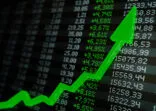“We haven’t owned anything in the Philippines for about two years, so we haven’t had any exposure mainly for those reasons,” Duhra told FSA.
Indeed, the Philippine stock market was one of the worst performers in 2016 and was also one of the most expensive when compared to its Southeast Asian peers, according to data from the SFC.
Stock market performance and valuations
|
Stock market |
2015-2016 % change |
PE ratios (end-2016) |
|
Philippines |
-1.60% |
18.7 |
|
Thailand |
19.80% |
16.74 |
|
Malaysia |
-3.00% |
16.44 |
|
Indonesia |
15.30% |
24.19 |
|
Vietnam |
14.80% |
15.9 |
Source: SFC
Duhra’s outlook for Philippine equities this year is not at all positive. Adding to his concerns are the country’s weak currency and the low trading volume in the stock market. The market has one of the lowest trading volumes in the region, he said.
But Duhra noted that the country is in a transitional phase and is positive in the long-term.
“If you take a five-year view, the Philippines and India still remain the two most compelling markets in Asia. But you need to get the infrastructure [spending] picking up and the currency stabilising, as well as a better consumer environment and maybe a few rate hikes as well,” he said.
Mixed bag
Echoing Duhra, Augusto Cosio, Philippines’ First Metro Asset Management Manila-based president, told FSA in a separate interview that equities in the country are very expensive at around 22 times earnings.
However, he believes that it is a mixed bag, and investors can find investment opportunities.
“You probably will have some issues [when looking for value], but when you find them, I think they are worthwhile,” he said, adding that some stocks are trading below 20 times their earnings, with some even below 15.
In addition, he said that the more expensive stocks could even price higher.
“Why? Because of the growing underlying earnings that can multiply itself in the next couple of years,” he said, referring to some companies that have infrastructure projects at the moment.
However, although he said he likes infrastructure-related stocks, he is still cautious within the sector.
“The major infra projects are still in the expectation stage, so you really don’t want to put all your chips down and make a bet. But you’re putting ante in the pot right now, because if you don’t put ante in the pot, you won’t be in the game.”

Augusto Cosio, First Metro Asset Management
Currency weakness play
Unlike Henderson’s Duhra, Cosio sees opportunities in the Philippines’ currency, the peso.
“The weaker peso is putting more spending money into our system because this country has about 15 million or so beneficiaries of overseas Filipino workers’ remittances.”
The Philippines is the top three remittance-receiving countries, just after China and India, according data from the World Bank. In 2015, it received around $29.7bn in remittances.
He added that a number of business processing services (BPO) companies are also dollar earners.
According to a World Bank document, the Philippines’ BPO industry is a key driver of the services sector, with revenues of around $21bn in 2015. The bank expects BPO revenues to reach $35bn next year, surpassing the projected value of remittances of $34bn.
Besides currency weakness, he also sees positive macroeconomic indicators.
“Inflation has also not been a problem and prices have been stable,” he said. GDP growth exceeds that of China at nearly 7%.
















